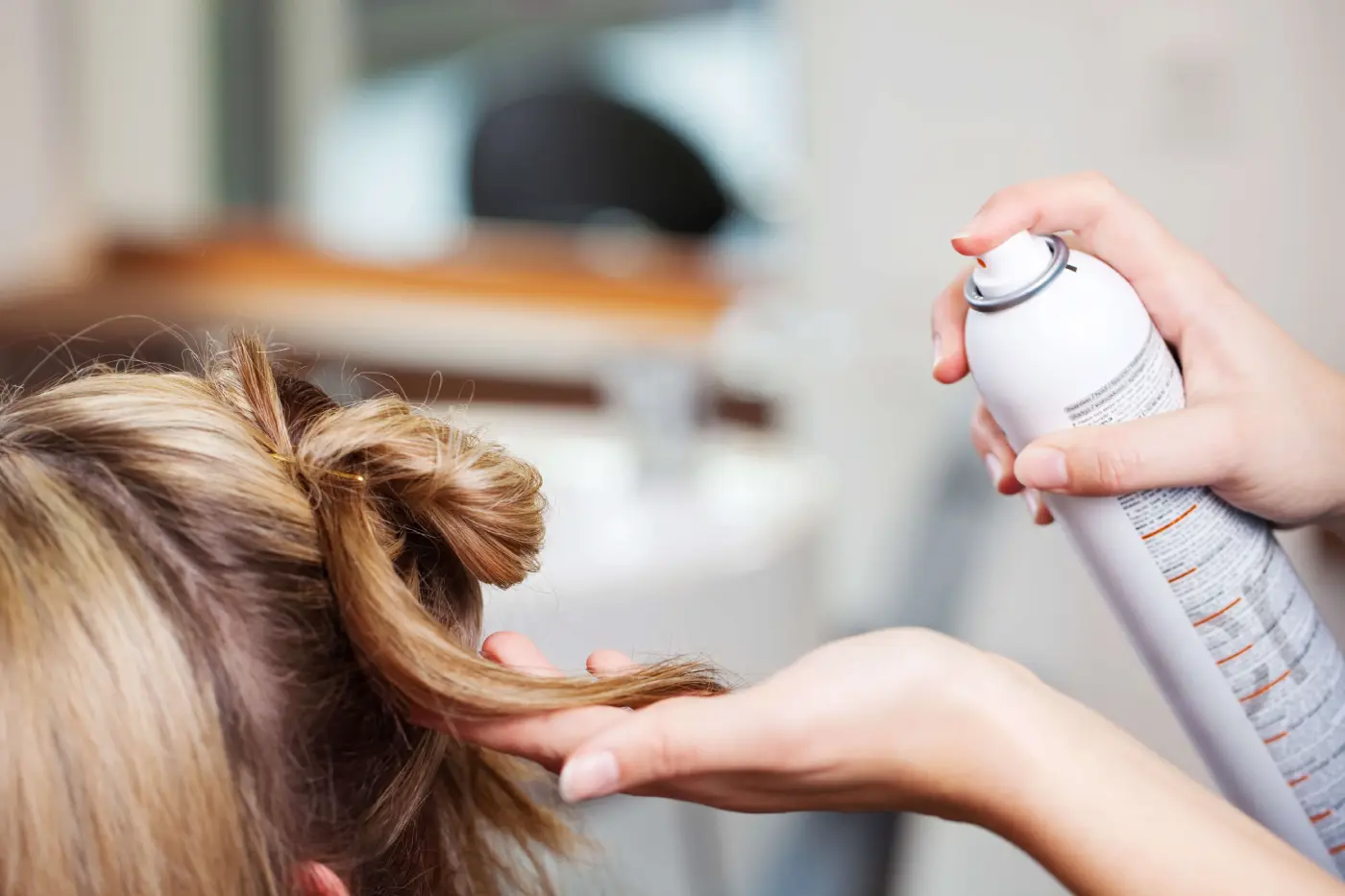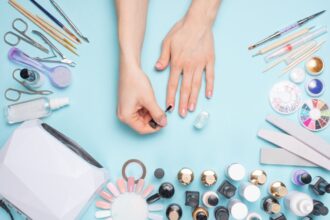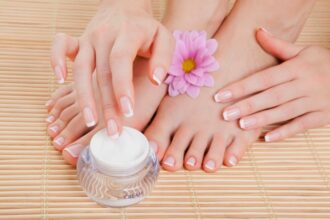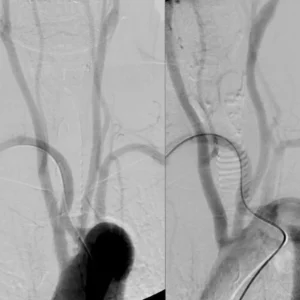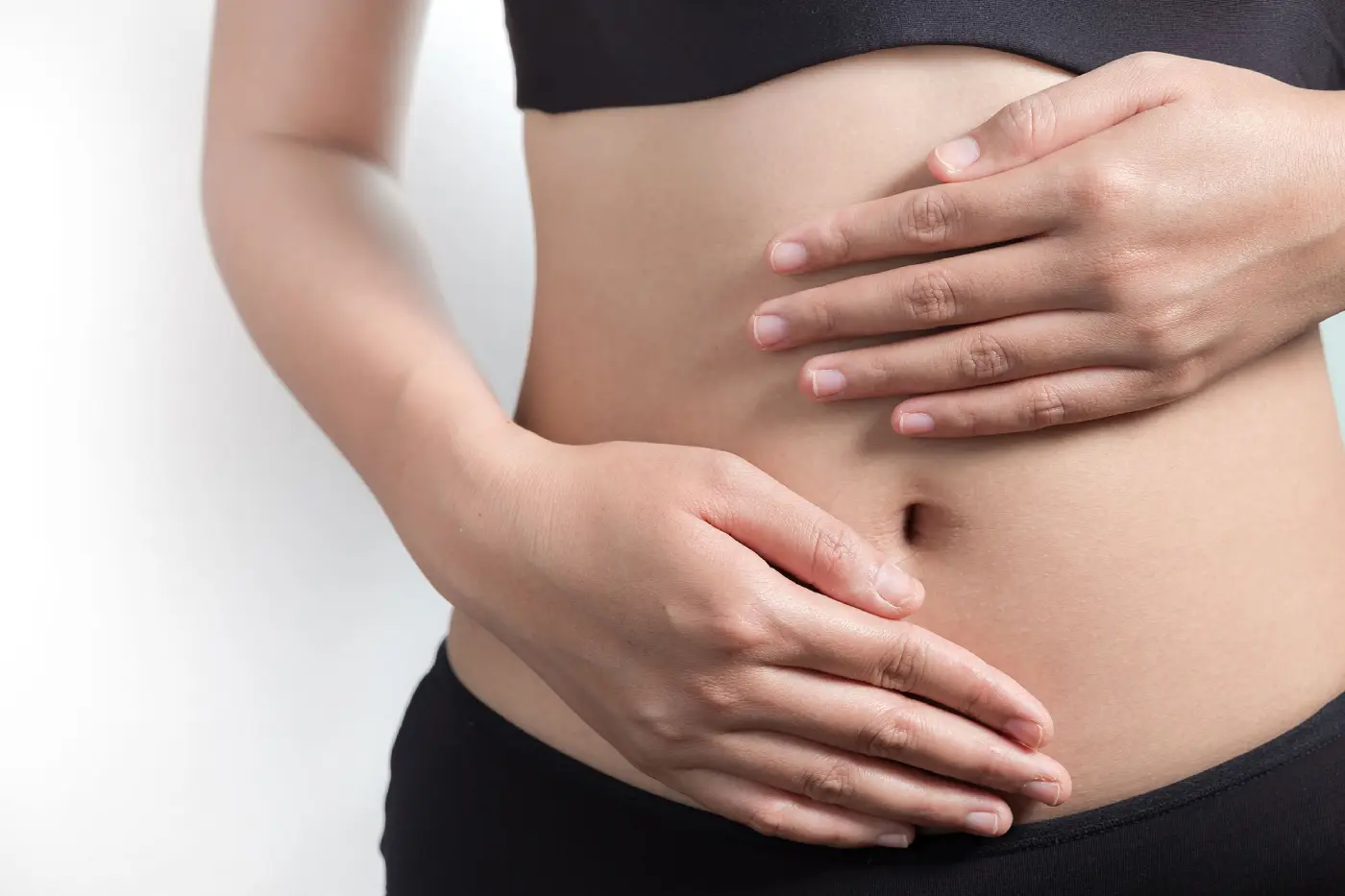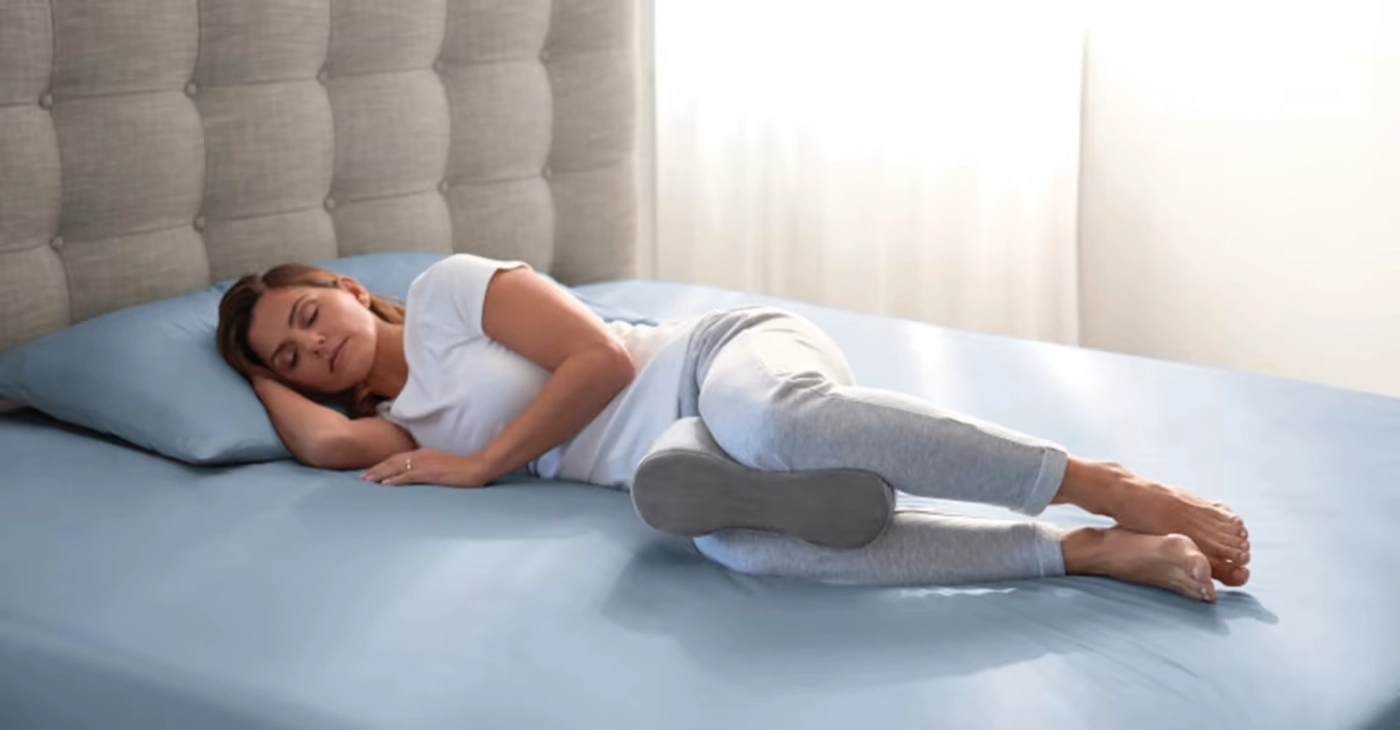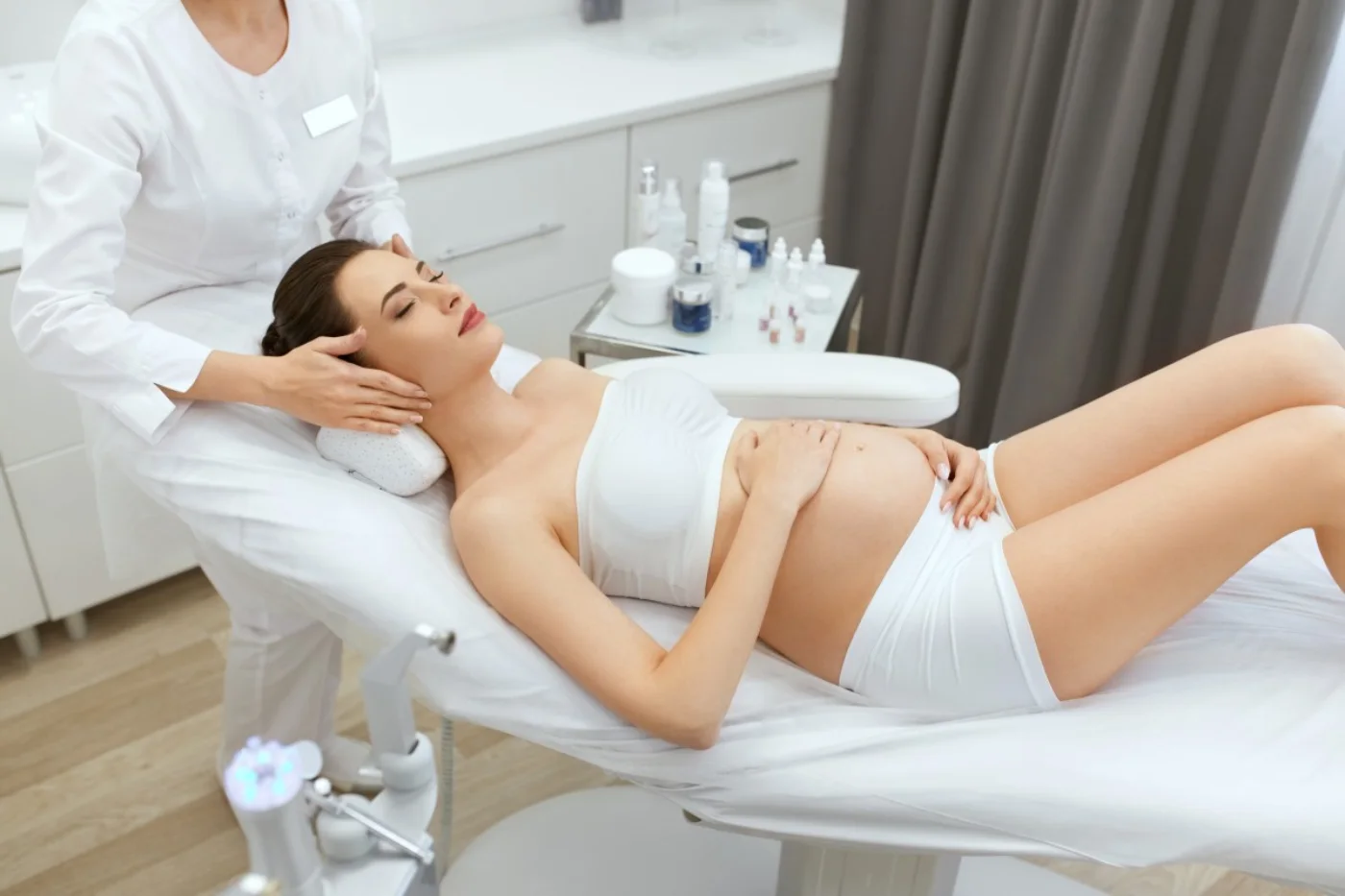The transition in hair texture during pregnancy often instigates women to explore new, safe, and efficacious products. This is where the safe hairspray for pregnancy comes into play as an immensely utilized product both prior to and throughout the gestation period. However, there have been past studies that link the use of hair sprays to some unfavorable pregnancy outcomes.
Encountering phthalates along with other endocrine-disrupting chemicals can usher in adverse effects for pregnant women and their offspring. Albeit, the absorption of these chemicals through the use of hair sprays is considered negligible and posing little known harm. Yet, the most prudent course is for women to minimize the use of hair chemical products as much as possible to completely eliminate any potential risk to the fetus.
This article dives deep into the realm of hair spray usage, its components, and its common utilization. It will also bring forth a discussion on the potentially harmful chemicals present and their potential effects upon exposure, particularly focusing on the context of pregnant women. Lastly, it will address some crucial guidelines pertaining to the use of a safe hairspray for pregnancy.
What is Hair Spray?
Hair spray is a predominant hair care product employed by women to retain their hair’s preferred position. Comparable to wax or gel, hair spray is utilized to alter the hair shaft’s “lift” also ensuring weather resistance and enhancing hair gloss.
Hair sprays are promoted as a quick-dry liquid, launched from an aerosol can, designed to be applied to either wet or dry hair to facilitate the endurance of a specific hairstyle. They can also act as a final touch to the hairstyle, help in forming curls, contain rebellious strands, disguise fringes of oily hair, and give an illusion of increased hair volume.
A good, safe hairspray for pregnancy constitutes regular ingredients like alcohol and polymers, similar to those found in paint and adhesive. These compounds enable the temporary adhesion of hair shafts.
Potential Detrimental Compounds in Safe Hairspray for Pregnancy
The escalating concern revolving around the potential health hazards triggered by endocrine-disrupting compounds (EDCs) is noteworthy . Functionally, EDCs are exogenous chemicals or blends of chemicals that can modify any aspect of hormone action .These compounds can either impersonate human hormones, restrict hormone action, or alter the standard regulation of the human endocrine system.
Impacts of Exposure to Hair Spray During Pregnancy

Intrauterine exposure to EDCs can trigger potentially harmful anti-androgenic effects on male sexual development, specifically during the early stages of pregnancy where the external genitalia are still developing . EDCs found in frequently used personal care items, including a safe hairspray for pregnancy, encompass phthalates, bisphenol A (BPA), perfluorinated chemicals, triclosan, and parabens.
Potential Toxic Elements in Hair Spray
Phthalates are extensively used in personal care items . The usage of these everyday products contributes to a nearly common exposure to phthalates in industrialized nations. Phthalates can be consumed directly from food, applied as skin care products, or be inhaled as phthalate particulates in the atmosphere.
Toxicological studies indicate that phthalates have the potential to compromise human hormonal systems and sexual development .Some research suggests that phthalates can unsettle the body’s hormonal balance and hamper the growth of the reproductive system, causing the development of hypospadias- a common male genitalia deformity.
Regulations For Safe Hairspray For Pregnancy
Across Europe, the prevalence rates of hypospadias are estimated to range from 4 to 24 per 10,000 live births, with higher rates reported in the United States. A 2010 study by Nassar et al. showed a correlation between women with a history of phthalates exposure and a higher likelihood of delivering male offspring with hypospadias.
In a similar vein, a 2017 study by Haraux et al. suggests maternal occupational exposure to EDCs as a potential risk factor for hypospadias, indicating a correlation between the usage of hair care products, such as a safe hairspray for pregnancy during early pregnancy, and the development of hypospadias in offspring.
Regulations in the United States do not mandate the listing of individual fragrance components on product labels, leading to the inconspicuous presence of phthalates. However, research indicates that phthalates persistently inhabit numerous hair care products.
Hubinger & Avery (2006) found at least one phthalate ester in most consumer cosmetic products, inclusive of the hair care category. Phthalates were also found in hair sprays and hair mousses by Koniecki et al. (2011), and Shen et al. (2007) corroborated the presence of phthalates and parabens in cosmetic products, inclusive of hair sprays.
In 2013, Parlett et al. studied the associations between the use of personal care products, including a safe hairspray for pregnancy, and the occurrence of phthalate metabolites in urine samples within 24 hours of usage. The results portrayed a positive link between the use of perfumes, hair sprays, nail polish, and deodorants, and higher concentrations of monoethyl phthalate.
The Impact of Hairspray Use During Pregnancy: Finding Safeguarding Measures
Incomplete human data leaves room for conjecture about the potentially adverse effects of the exposure to hairspray chemicals during pregnancy, especially when considering safe hairspray for pregnancy usage. Although some studies fail to establish a link between hairspray use and detrimental pregnancy outcomes, the potential for absorption of these chemicals via the scalp or through inhalation, and subsequent transmission to an unborn child, remains.
Ghazarian and his team in 2018 revealed a lack of connection between the employment of hairsprays during pregnancy and a heightened risk of teratogenicity in the newborn.
Guidelines on the Utilization of a Safe Hair Spray During Pregnancy
Conversely, an investigation in the publication “Environmental Health Perspectives,” raised concerns signifying that pregnant women with substantial workplace exposure to hairsprays, are potentially at double the risk of birthing sons with the genital birth defect—hypospadias. Women who encounter hairspray exposure in their workplace during their first trimester may foresee a two or three-fold risk of this occurrence.
Nonetheless, the UK NHS has critiqued this study, citing limitations in research design, and refuting proof of harm from hairspray use in early pregnancy. The plea for more comprehensive research further emphasizes the quest for concrete evidence on the potential hazards of hairspray chemicals during pregnancy.
Safe Hairspray for Pregnancy Usage
Presently, scientific data does not definitively confirm teratogenic effects from pregnant women’s exposure to hairspray products. Heavily exposed individuals, such as hairdressers, are recommended to adopt certain preventive measures:
- Wear gloves to minimize exposure.
- Cap work hours at 35 per week.
- Avoid lengthy periods of standing.
- Ensure working areas are well ventilated.
Studies substantiate negligible systemic absorption of hairspray chemicals, suggesting that a safe hairspray for pregnancy use of up to 3 or 4 times throughout the pregnancy should pose no harm.
Pregnant women can largely maintain their usual per-pregnancy hair product routine, including items like shampoo, conditioner, hairspray, gel, or mousse. The key considerations for safe hairspray for pregnancy usage include:
Utilizing phthalate-free hair sprays
Steering clear of hairspray products with synthetic fragrances
Using hairspray in airy spaces
Considering alternatives that don’t permeate the air, such as gel or mousse
However, medicated shampoos should not be used unless explicitly prescribed for pregnancy.
In Closing about safe hairspray during pregnancy
While hairsprays often contain potentially detrimental chemicals like phthalates, known endocrine disruptors, their effects on prenatal development, particularly on the male respiratory tract, remain ambiguous due to insufficient human data.
Because chemical absorption is generally minimal, personal safe hairspray for pregnancy application is deemed acceptable. Adherence to the aforementioned safety measures can mitigate risks from extensive, occupational exposure.
Should pregnant women harbor reservations about the safety of their hairspray, it is advisable to consult healthcare professionals for reassuring clarifications.




